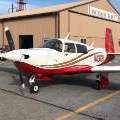ATC: Mooney is already 20 knots faster than you
-
Members Online
- Speed Brakes
- Markku
- highflyer77
- Marc_B
- drpovation
- Deb
- Planegary
- exM20K
- good2eat
- daytonabch04
- Rwsavory
- Mikey30V
- saltydecimator
- ohdub
- Robert C.
- Schllc
- Jpravi8tor
- PeterRus
- Jrags
- rbmaze
- Shadrach
- redbaron1982
- hubcap
- bhtitle
- Lax291
- slowflyin
- MooneyMax
- Sabremech
- Patrick Horan
- Peter T
- Lincoln
- Crawfish
- Sense
- Echo
- crustymuffin
- pilot_jb
- johnnyr172
- wolfbyte
- JimK
- M20F


Recommended Posts
Join the conversation
You can post now and register later. If you have an account, sign in now to post with your account.